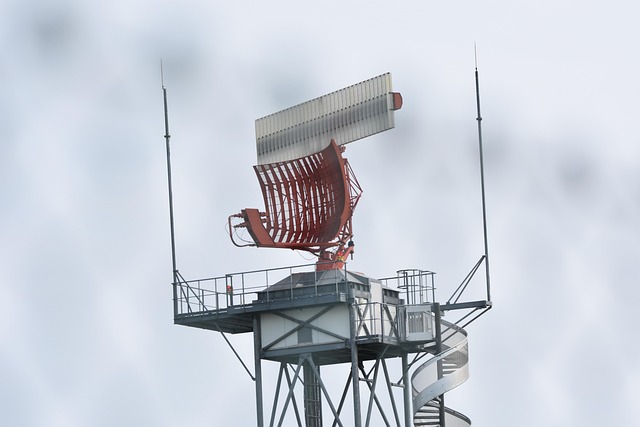Assessing soil thermal inertia to improve surface-based moisture anomaly mapping
Soil thermal inertia influences how quickly ground temperatures change and how moisture-related anomalies appear at the surface. For operators managing pipelines and other buried infrastructure, accounting for thermal inertia helps separate true moisture signals from temperature-driven noise. This overview describes how surface thermal surveys, sensor calibration, and integrated telemetry can improve moisture anomaly mapping and inform targeted inspection and excavation efforts.

Soil thermal inertia describes the resistance of the ground to temperature change, controlled by heat capacity, thermal conductivity, and density. In practical terms, soils with high thermal inertia warm and cool more slowly than low-inertia soils, which affects surface temperature signatures used in thermal surveys. When mapping moisture anomalies, failing to account for thermal inertia can produce false positives or mask true leaks. For pipeline managers and field teams, combining thermal observations with knowledge of subsurface properties improves the reliability of surface-based moisture mapping and reduces unnecessary excavation and disruption.
How does soil thermal inertia affect moisture mapping?
Soil thermal inertia modulates daily and seasonal temperature cycles. Moisture changes alter heat capacity and conductivity — wetter soils often exhibit different thermal response than dry soils. During a thermal survey, surface sensors detect temperature variations that may indicate subsurface moisture movement or pooling. Interpreting those variations requires separating transient thermal effects from persistent moisture-related cooling or warming. Modeling thermal inertia alongside moisture diffusion enables more accurate mapping of anomalies and helps focus follow-up pipeline diagnostics, reducing false alarms during inspection and monitoring.
What sensors and calibration improve surface surveys?
Survey accuracy depends on sensor selection and calibration. Thermal infrared imagers, ground-based radiometers, and distributed thermal sensors capture surface temperature contrasts. Calibrating sensors against known temperature references and accounting for emissivity and solar loading are crucial. Combining thermal sensors with moisture probes and electromagnetic sensors provides cross-validation. Proper calibration routines and sensor fusion help convert raw thermal readings into interpretable moisture indicators, improving the surveys used for pipeline integrity assessments, telemetry feeds, and periodic monitoring campaigns.
How can fiberoptic and acoustic telemetry aid detection?
Fiberoptic technologies such as distributed temperature sensing (DTS) and distributed acoustic sensing (DAS) provide continuous, high-resolution data along a pipeline corridor. DTS identifies spatial temperature anomalies consistent with moisture migration, while DAS detects acoustic signatures from escaping fluids or ground movement. Integrating these telemetry streams with surface thermal surveys strengthens anomaly detection: fiberoptic telemetry offers continuous, linear coverage; surface mapping provides areal context. Together they enable rapid triage of potential leaks and support targeted inspection without widespread excavation.
How to integrate subsurface diagnostics and inspection?
Surface thermal anomalies guide where to deploy subsurface diagnostics including ground-penetrating radar, electromagnetic surveys, and soil moisture probes. Correlating surface mapping with subsurface measurements helps confirm whether an anomaly originates from a pipeline, shallow groundwater, or natural heterogeneity. Inspection teams use this combined data to prioritize excavations and integrity checks. Diagnostics should include sensor calibration records and baseline surveys to distinguish long-term trends from short-lived events and to ensure inspection efforts are data-driven and minimally invasive.
How does anomaly triage guide excavation and integrity work?
Triage protocols classify anomalies by confidence and potential risk, balancing intervention costs against safety and environmental impact. High-confidence moisture signatures near known pipeline features or recent telemetry alerts warrant expedited excavation and targeted diagnostics. Lower-confidence signals may prompt additional monitoring or repeat surveys. Integrating thermal inertia models into triage reduces unnecessary excavations by flagging anomalies likely caused by thermal lag or soil heterogeneity rather than leaks, preserving resources while maintaining pipeline integrity and regulatory compliance.
Monitoring strategies for long-term mapping and maintenance
Long-term monitoring combines periodic surface thermal surveys with continuous telemetry and scheduled subsurface checks. Regularly updated thermal inertia and soil moisture baselines improve anomaly detection sensitivity over time. Sensor networks should include redundant modalities — thermal, acoustic, and moisture sensors — and undergo routine calibration to maintain accuracy. Data from monitoring supports predictive maintenance, informs inspection intervals, and documents condition trends relevant to excavation planning, diagnostics, and integrity management programs.
Conclusion Accounting for soil thermal inertia enhances the interpretation of surface temperature signals and reduces ambiguity when mapping moisture-related anomalies. Coupling calibrated surface surveys with fiberoptic and acoustic telemetry, subsurface diagnostics, and structured triage protocols enables more precise, resource-efficient investigation of potential leaks or moisture issues along pipelines. A data-driven, multi-sensor approach supports reliable monitoring and targeted inspection while minimizing unnecessary excavation and operational disruption.





